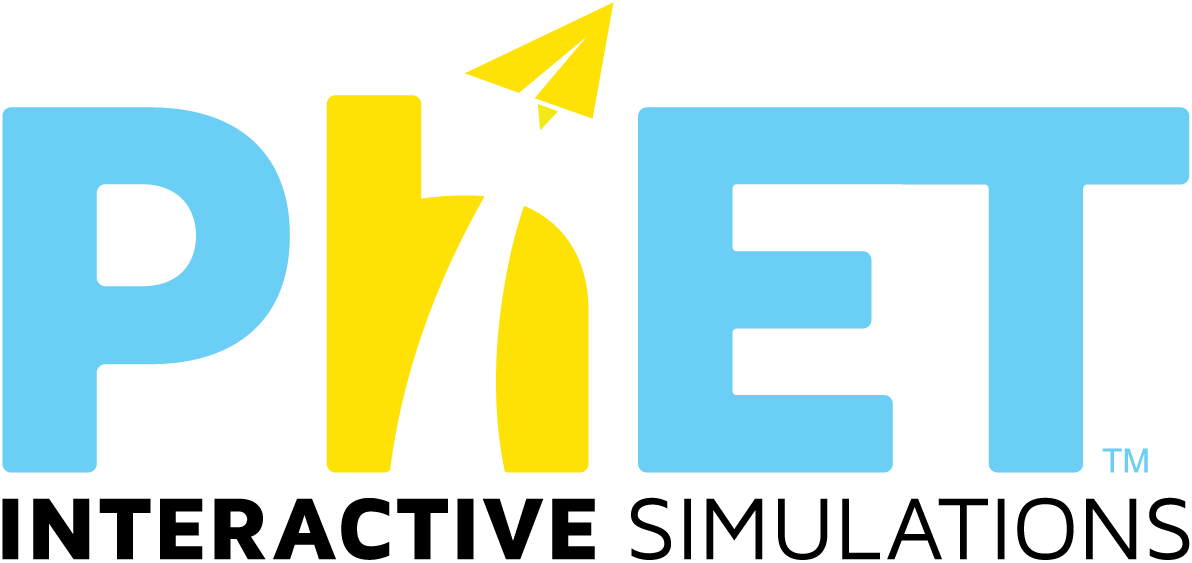235 sبهرههمی گهڕانهکه وا لێی نزیکه molecular view of matter
شێوهکاریهکان
- بارگەکان و بوارەکان (HTML5)
- بینینی ڕەنگەکان (HTML5)
- تاقیگەی بارگەگری - سەرەتایی (HTML5)
- تاقیگەی دروست کردنی سوڕی کارەبایی - گۆڕدراو (HTML5)
- دروستکردنی سوڕی کارەبایی نەگۆڕ (HTML5)
- تاقیگەی دروستکردنی سوڕی کارەبایی نەگۆڕ (HTML5)
- دروست کردنی سوڕی کارەبایی گۆڕاوو (HTML5)
- States of Matter (HTML5)
- شەبەنگی تەنی ڕەش (HTML5)
- لێکخشاندن (HTML5)
- هاوسەنگ کردنی هاوکێشە کیمیاییەکان (HTML5)
- پارکی وزە (HTML5)
- کارلێکی نێوان گەردیلەکان (HTML5)
- گیراوەی ترش و تفتەکان (HTML5)
- گەرد دروست بکە (HTML5)
- States of Matter: Basics (HTML5)
- Balloons and Static Electricity
- Electric Field Hockey
- Energy Skate Park: Basics (HTML5)
- Graphing Quadratics (HTML5)
- Equation Grapher
- Faraday's Electromagnetic Lab
- Forces in 1 Dimension
- Forces and Motion
- Gas Properties (HTML5)
- Gene Expression Essentials (HTML5)
- Gene Expression - The Basics
- Microwaves
- Molecular Motors
- Molecule Polarity (HTML5)
- Molecule Polarity
- Molecule Shapes (HTML5)
- Molecule Shapes: Basics (HTML5)
- Number Line: Operations (HTML5)
- Optical Tweezers and Applications
- pH Scale (HTML5)
- Plinko Probability (HTML5)
- Quantum Wave Interference
- Reactants, Products and Leftovers (HTML5)
- Stretching DNA
- Sugar and Salt Solutions
- Vector Addition: Equations (HTML5)
چالاکیهکان
- Exploring Changes in States of Matter
- Kinetic Molecular Theory- Introduction (inquiry-based)
- Phases of Matter
- Kinetic Molecular theory review
- States of Matter Basics - Clicker Questions
- States of Matter (Inquiry based) Phase Change and Phase diagrams
- States of Matter for Middle School
- Gases Understanding physical properties of gases (Inquiry Based)
- Introducción a los estados de la materia
- States of Matter Lecture Demonstration
- Heat it Up
- States of Matter
- Flow stretching and molecular motors
- Intermolecular Forces and States of Matter - Interactive Lecture Demonstration
- States of Matter PhET
- Chemistry Theater
- States of Matter
- Reactions and Rates 4: Equilibrium LeChatlier
- Intermolecular Forces and Molecules - Interactive Lecture Demonstration
- Build a Molecule - Molecular Formulas and Coefficients
- States of Matter Compare Matrix
- States of Matter
- Friction demonstration
- Molecular Geometry Activity
- Molecular Geometry Flash Cards
- Concept Questions for Chemistry using PhET
- Using PhET in High School Chemistry- all my activities in pdf
- IMF and phase changes
- States of Matter Simulation
- States of Matter Matrix
- States of Matter PhET
- Investigating Molecule Shapes
- Reactions and Rates 1 Introduction to reactions (Inquiry Based)
- Entropy, Microstates, and Probability - Interactive Lecture Demonstration Guide
- States of matter simulations
- States of Matter
- Balloons and Bouyancy: An Introduction to Bouyancy - (Inquiry Based)
- States of Matter Guided Activity - PhET Simulation
- Boiling, Freezing, and Melting Points
- Student Guide for PhET - States of Matter in html5
- Energía térmica y cambios de estados
- Identifying and Differentiating States of Matter
- Electrolyte and Non-electrolyte Solutions - Interactive Lecture Demonstration
- Gas Properties Modular Homework Activity
- Moving Molecules
- Estados de la materia: Cambio en la estructura molecular del agua
- States of Matter Basics Student Guide
- Reactions and Rates 2: Intro to Kinetics (inquiry based)
- The Speed of Particles in the Different States of Matter
- States of Matter
- States of Matter Simulation Lab
- PhET Lab States of Matter Basics
- States of Matter Modeling
- states of matter basic
- States Of Matter
- Fuerzas Intermoleculares y Estados de la Materia
- Geometria Molecular
- Sugar and Salt Solutions - Annotated Lecture Slides
- Formulas y nombres de moléculas
- Build an Molecule - concept questions
- Build an Molecule - Inquiry-based basics
- Introduction to energy- a chemical context
- States of Matter - Lab Simulation - student procedures and questions
- States of Matter: Basics
- Geometria molecular
- Phase Changes using States of Matter Sim
- Phase Changes using States of Matter Sim
- States Lab
- Geometria Molecular
- Investigation of sugar and salt solutions
- Using the particle model to explain states of matter
- Exploring Equivalent Fractions - Introduction
- Remote Learning Molecule Shapes
- States of Matter lab handout
- Introdução a Geometria molecular
- Reactants, Products, and Leftovers Activity 2: Limiting Reactants in Chemical Reactions
- Reactants, Products, and Leftovers Concept Questions
- Reactants, Products, and Leftovers Review Activity: Limiting Reactants in Chemical Reactions Review
- Sugar and Salt Solutions - Clicker Questions
- Using the Molecular Shapes PhET Simulation: Concept Development for Understanding Molecular Geometry and Shape
- Modeling Friction (Inquiry Based)
- States of Matter: Basics lesson plan
- MADDƏNİN AQREQAT HALLARI
- Estado de Agregación
- Preguntas Clicker Cambios de la materia
- Por que materiais diferentes se apresentam em estados físicos diferentes em uma mesma temperatura?
- GUÍA DE APRENDIZAJE ESTADOS DE LA MATERIA
- Estats de la matèria
- Termodinâmica (Atividades) nos OA's do PhET
- States of Matte Inquiry
- Using the Molecule Polarity PhET Simulation: Concept Development for Understanding Molecular Dipoles
- States of Matter Inquiry using Phet
- Build a Molecule
- Density Lesson (with Putty Lab)
- Aprendendo Geometria molecular a partir da estrutura de Lewis
- It’s All in the Shape: Discovering Molecular Geometry
- Staes of Matter Exploration
- Cuadernillo PhET La materia y sus interacciones 2023
- Maxwell-Boltzmann Distribution Curves
- Molecular Geometry and Polarity
- Molecule Shapes- inquiry
- Balancing Chemical Equations - Inquiry based Introduction
- Lei Geral dos Gases no "States of Matter: Basics (HTML5)"
- States of Matter - Solid,Liquid,Gas
- Balancing Chemical Equations - Guided Inquiry Activity
- Elements and Compounds Lesson
- Introduction to Waves: Liquid Matter, Sound, and Light
- States of Matter Basics Simulation
- True or False? 1st grade
- Generating Equivalent Expressions
- ChemActivity: Phase Changes and Intermolecular Forces
- Molecules and Light-inquiry for high school
- GEOMETRÍA MOLECULAR Y NOMENCLATURA DE ALCANOS
- PhET Shapes Inquiry Lab
- Inquiry activity about State of Matter: Basic
- Estados da Matéria no "States of Matter: Basics (HTML5)"
- How do PhET simulations fit in my middle school program?
- Molecule Polarity- Inquiry and Applications
- Concept questions for Physics using PhET (Inquiry Based)
- Molecule Shapes - Guided-Inquiry Activity
- Molecule Polarity
- QUÍMICA GERAL CONTEÚDO: GEOMETRIA MOLECULAR
- Algebra-based Physics Semester one lessons, clicker questions, and schedule in pdf (Inquiry Based)
- PHET INTERACTIVE SIMULATIONS COMO FERRAMENTA NO ENSINO DE TERMODINÂMICA
- Molecular Polarity Inquiry Lab
- Kinetic Molecular Theory Intro
- Kinetic Molecular Theory
- Phase Changes Lab!
- Quantum Wave Interference, PhET, Worksheet, High Intensity, Problems
- Visualizing a Mixture
- Photoelectric Effect Activity
- Gas laws simulation lab
- MS and HS TEK to Sim Alignment
- NGSS Eating and Exercise Activity HS-LS1-2
- Density-MS
- On the molecular level, what is the difference between acids and bases?
- Recognizing Patterns in Covalent Bonding
- Microwaves
- It’s All in the Shape: II. Discovering the Behavior of Polar Molecules
- Polarity Lab
- 물질의 상태SIM 사용지침서
- Thermal Expansion
- Gli stati della materia
- Molecules Are Made Up of Atoms
- Lesson Plan for Teaching Shapes of Molecule
- De fasen van een stof
- Molecule Design Challenge Pre-Activity
- Introduction to Ionic & Covalent Bonding
- Phet Simulation - Modeling Molecules
- Build an Atom: Introduction
- NGSS Alignment Doc for Middle School targeted PhET Sims
- 물질의 상태(기초) SIM 사용지침서
- Undersøgelse til Stoftilstande Basis
- Teoria zinetikoa. Materiaren egoera fisikoak eta uraren egitura berezia.
- Reconociendo los estados de agregación
- Estados de la Materia
- Einführung der Aggregatzustände im Teilchenmodell
- Cambio de Estado
- Prelaboratorio estados de la materia
- Preguntas Clicker sobre Estados de la Materia
- Isotopes activity sheet
- Outlining Bonding vs. Shape Polarity
- Molecule Shapes Advanced
- Alineación simulaciones PhET con el Currículo Ecuatoriano - Química - Bachillerato
- How Does the Earth's Climate Change?
- Compendio de Actividades e ILDs basadas en simulaciones PhET
- Preguntas de razonamiento para todas las simulaciones HTML5
- PhET Sims Aligned to the Chemistry Curriculum
- Building and Naming Molecules
- The Basics of Gene Expression
- Visualizing Mixing with Sugar and Salt Solutions
- Alignment of PhET sims with NGSS
- Mr. (Moving Man)
- Simple Inquiry-based Build an Atom Simulation Student worksheet
- SECUNDARIA: Alineación PhET con programas de la SEP México (2011 y 2017)
- Exploration of KMT and Gas Laws
- Build a Molecule Basics
- ¡Ajustando átomos!
- Wave Interference in 2D
- Making Molecules
- Introductions to Solutions
- PREPARATORIA: Alineación de PhET con programas de la DGB México (2017)
- Gas Properties Simulation
- Refraction in Glass Blocks
- Weak vs. Strong
- PhET Interactive Lab on pH
- FREE Auto-Graded PhET Activities on Quizizz
- Atom Builder
- Discovering Newton's Second Law
- Exploring Chemical Reactions and the Law of Conservation of Mass
- Climate Change - The Gas Phase
- Building Atomic Models
- Lab: PhET Sugar and Salt Solutions


